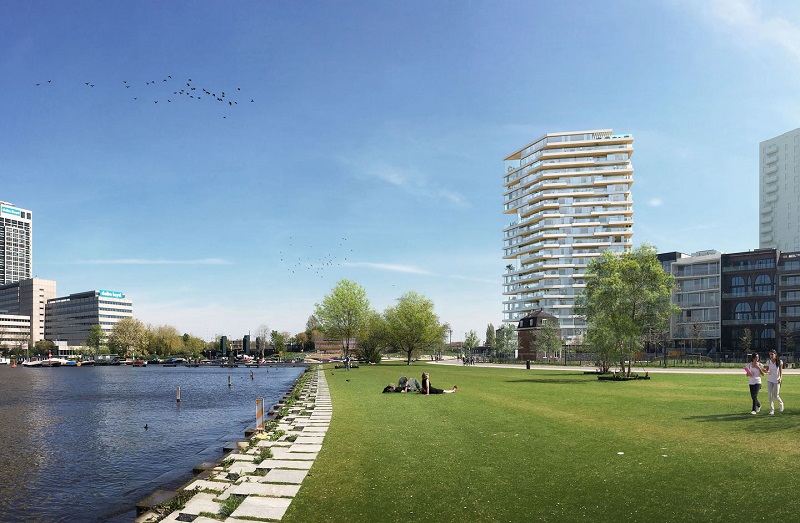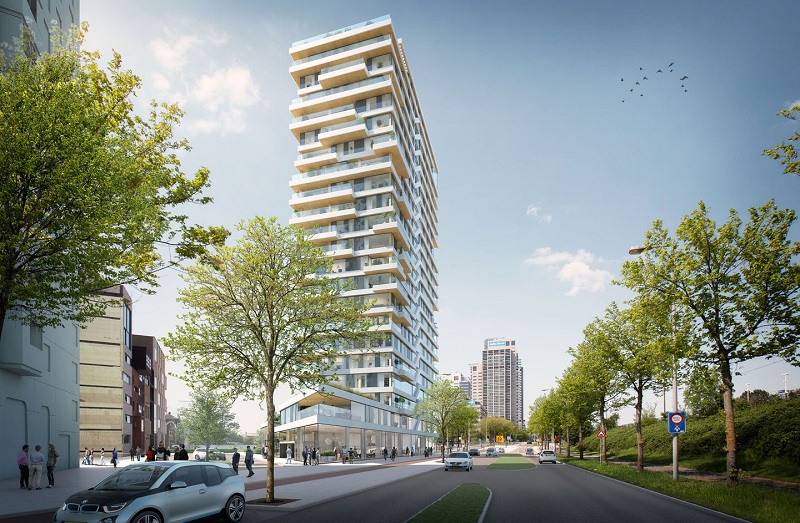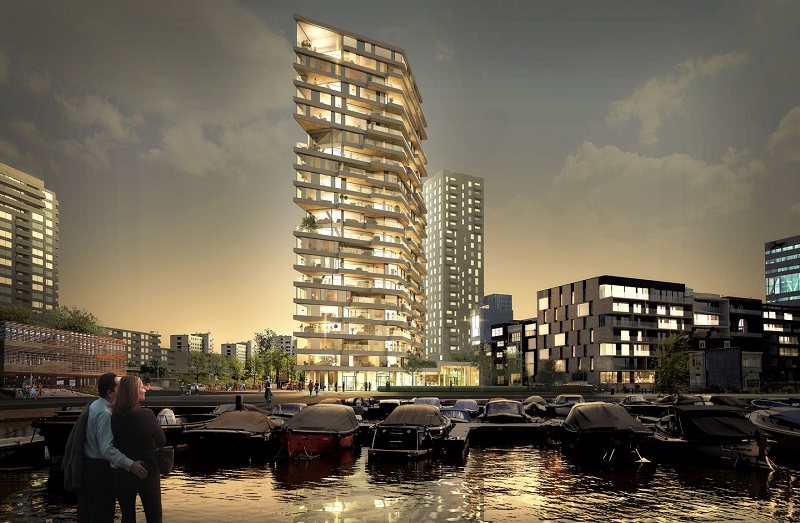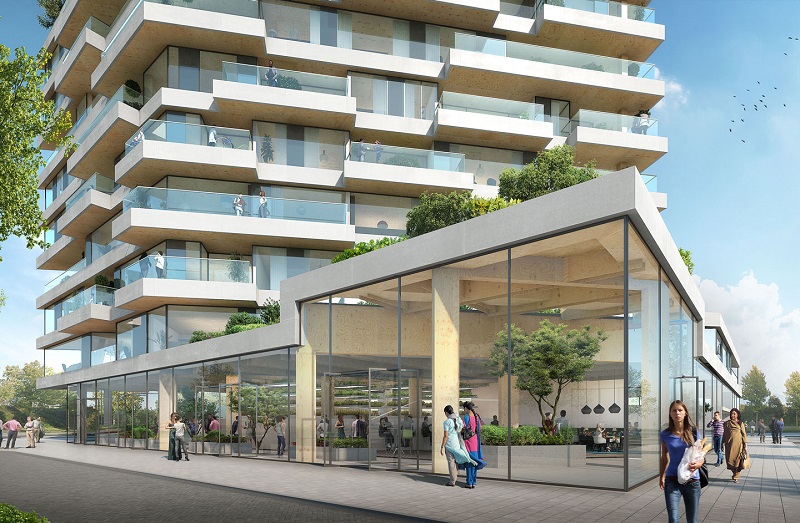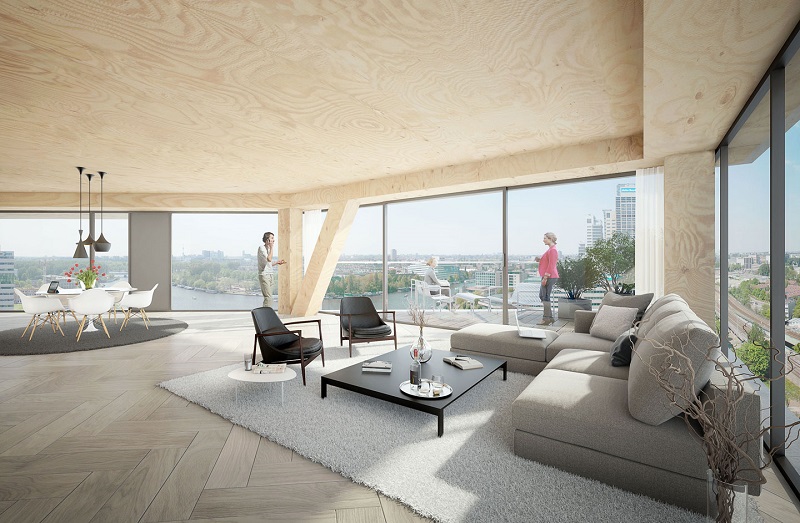HAUT, Amsterdam
On 20 July 2016, the municipality of Amsterdam selected Team V Architectuur to develop HAUT, the tallest timber tower in the world.
The 21-storey, 73 m, timber residential building will be located in Amstelkwartier, a new residential neighbourhood on the River Amstel, and will provide 55 apartments of different sizes.
The design is characterised by strong lines of light grey floor bands and tall windows, with cantilevering balconies arranged in an apparently random pattern. The timber ceilings below the balconies and the pronounced projections at the sharp building corner facing the River Amstel will add to HAUT’s distinctive appearance.
Team V Architectuur join other firms including ARUP, Lingotto and brand partner Netherlands Energy Company (NLE), to develop what is expected to be a prototype for building a timber high-rise in a sustainable and eco-friendly way.
The design of the tower is targeting a BREEAM Outstanding rating, the highest possible sustainability grade. The aim is for more than 3 million kg of carbon dioxide to be stored in the cross-laminated timber that is used to build HAUT. The design also includes energy-generating facades and wastewater collection and purification.
The name HAUT derives from ‘haute couture’ – tailor-made architecture. Residents of the high-rise will have considerable freedom of choice in terms of the apartment size, number of floors, lay-out and positioning of double height spaces, and balconies.
For more information, see HAUT.
Images and content courtesy of Team V Architectuur.
[edit] Find out more
[edit] Related articles on Designing Buildings Wiki
Featured articles and news
RTPI leader to become new CIOB Chief Executive Officer
Dr Victoria Hills MRTPI, FICE to take over after Caroline Gumble’s departure.
Social and affordable housing, a long term plan for delivery
The “Delivering a Decade of Renewal for Social and Affordable Housing” strategy sets out future path.
A change to adoptive architecture
Effects of global weather warming on architectural detailing, material choice and human interaction.
The proposed publicly owned and backed subsidiary of Homes England, to facilitate new homes.
How big is the problem and what can we do to mitigate the effects?
Overheating guidance and tools for building designers
A number of cool guides to help with the heat.
The UK's Modern Industrial Strategy: A 10 year plan
Previous consultation criticism, current key elements and general support with some persisting reservations.
Building Safety Regulator reforms
New roles, new staff and a new fast track service pave the way for a single construction regulator.
Architectural Technologist CPDs and Communications
CIAT CPD… and how you can do it!
Cooling centres and cool spaces
Managing extreme heat in cities by directing the public to places for heat stress relief and water sources.
Winter gardens: A brief history and warm variations
Extending the season with glass in different forms and terms.
Restoring Great Yarmouth's Winter Gardens
Transforming one of the least sustainable constructions imaginable.
Construction Skills Mission Board launch sector drive
Newly formed government and industry collaboration set strategy for recruiting an additional 100,000 construction workers a year.
New Architects Code comes into effect in September 2025
ARB Architects Code of Conduct and Practice available with ongoing consultation regarding guidance.
Welsh Skills Body (Medr) launches ambitious plan
The new skills body brings together funding and regulation of tertiary education and research for the devolved nation.
Paul Gandy FCIOB announced as next CIOB President
Former Tilbury Douglas CEO takes helm.
UK Infrastructure: A 10 Year Strategy. In brief with reactions
With the National Infrastructure and Service Transformation Authority (NISTA).






